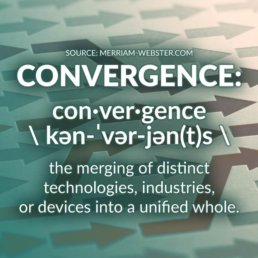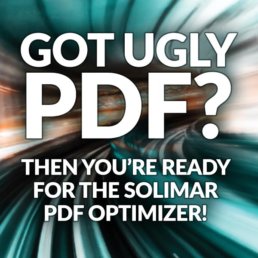A Deeper Dive: 5 Ways Print Workflow Will Easily Drive Future Success

Recently, we discussed 5 effective ways post-composition helps print production workflows handle more business, more efficiently. The goal: more business success for printers. The importance of this to the printing industry requires a deeper dive.
Let’s take a closer look at 5 ways post-composition workflow solutions can make an impact in your print environment:
1. Handle a Larger Number of Smaller Quantity Orders
Around the world, printers of all types talk to us about the challenge of more orders coming in but for lower quantities per order. Post-composition print workflow solutions are critical here. Optimizing print orders as they come in, commingling or batching them with like print jobs and automating the process with visible, trackable and reportable processes or workflows is crucial. Customers tell us this capability can save them hundreds of thousands of dollars in printing and process costs annually while opening the door to new revenue opportunities.
2. Fulfill the Requirement for Personalization
The idea of personalization isn’t new, but the need for it continues to grow. Personalization isn’t just about applying a name to a printed product. Regionalization is a key component to personalization and delivers unique experiences for recipients in different geographies. Using Variable Data Printing (VDP) techniques, printers can offer data-driven content that makes each printed piece more relevant and valuable to the recipient. That relevance can be driven by the user’s own preferences revealed by past purchasing behaviors or interests. Given the long timeframes typically associated with implementing composition workflows, personalization is often added in a more timely manner with a post-composition solution. By adding these crucial tools in print environments, organizations have the opportunity to offer customers extended services and grow their business overall.
3. Meet the Demands for Fast Production and Delivery
Rapidly changing expectations are pressuring printers to become more agile in meeting faster turnaround times. To do this, the critical processes within a volume print production environment need to be efficient. Automation is vital, leaving manual tasks for only those orders that have special needs or exceptions. Print Service Provider (PSP) clients of ours tell us that our post-composition solutions can dramatically reduce production overhead, time-to-complete, and manual labor across all types of jobs. At the same time, these solutions tend to improve accuracy and create new revenue opportunities.
4. Enable Competitive Pricing
Competitive pricing is based on both business and market factors. While businesses can build a competitive pricing strategy by adjusting profit margins or by bundling unique offers, a more typically sustainable approach is reducing structural overhead. Post-composition can provide the critical path to giving high-volume print shops the ability to reduce their operational expenses. Through hands-off, automated and templatized processes, organizations can streamline and drive costs down. The benefit is flexibility in maintaining profit margins while offering more competitive pricing to customers.
5. Leverage All Destination Devices and Channels
The fifth consideration for how post-composition easily drives success for volume PSPs is the ability to load balance or redirect work to the devices or channels available. Simply put, some operational decisions are best done after composition. With the right workflows, PSPs can derive significant benefit by digitally diverting jobs for e-delivery or by batching and segmenting content to optimize both printer and inserter utilization. In addition, such post-composition workflows tend to leverage postal discounts. No matter the need, post-composition print workflow solutions can help PSPs leverage the equipment they have and optimize the work they do.
My advice to influencers in In-Plant or Print Service Provider businesses is to take a closer look at your current processes. Make sure you walk your workflow from order or job receipt to the delivery of the finished product. If you see bottlenecks or slowdowns in the five areas mentioned above, you are on the right path to discovering a plan to improve your print business through post-composition software solutions.
For more information about Solimar Systems’ post-composition solutions, start a conversation with us by sending a note to contactus@solimarsystems.com.
Author

Jonathan Malone-McGrew
Senior Director, Engagement – Solimar Systems
jmm@solimarsystems.com
linkedin.com/in/jemcgrew
About the Author
With family roots in the print and digital communications space, Jonathan brings an understanding of client and partner environments, technologies and the resulting challenges. Responsible for partner and client engagement, he is always willing to lend his expertise.
More Articles From This Author
For more information, call the Solimar Sales Team at +1.619.849.2800.




